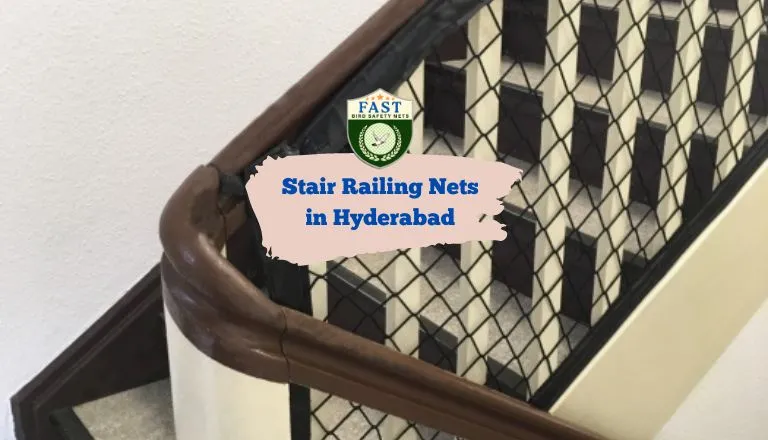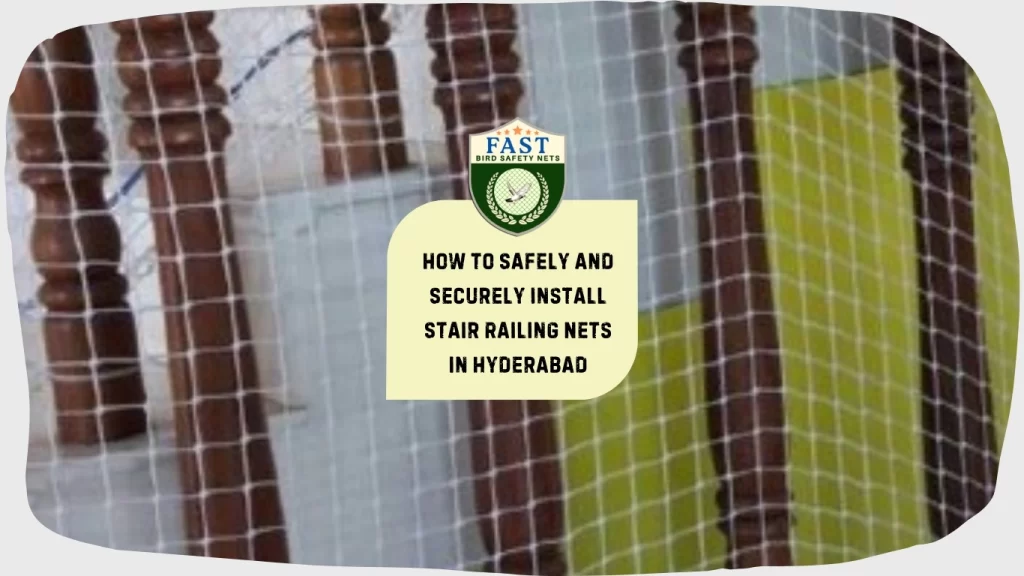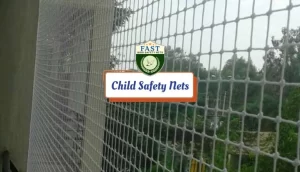Staircases are essential elements of any multi-story building, providing access between floors. However, they can also pose risks, especially for young children and pets, who may accidentally fall through gaps in stair railings. To address this concern, many homeowners in Hyderabad are opting to install stair railing nets. In this comprehensive guide, we will explore the step-by-step process of safely and securely installing stair case railing nets in Hyderabad, ensuring the safety of residents and peace of mind for families.
1. Assessing the Area: Before beginning the installation process, it’s crucial to assess the area where the stair railing nets will be installed. Take note of the dimensions of the staircase, including the length, height, and angle of the railing. Additionally, identify any potential obstacles or challenges that may need to be addressed during installation.
2. Selecting the Right Materials: Choosing the appropriate materials for stair railing nets is essential for ensuring durability and effectiveness. Opt for high-quality netting materials that are resistant to wear and tear, UV rays, and weather conditions. Additionally, consider the color and mesh size of the netting to ensure it blends seamlessly with the aesthetics of the staircase.

3. Taking Safety Precautions: Before starting the installation process, it’s essential to prioritize safety. Equip yourself with the necessary safety gear, including gloves, goggles, and a sturdy ladder. Additionally, ensure that the area surrounding the staircase is clear of any obstacles or hazards that may pose a risk during installation.
4. Measuring and Cutting the Netting: Using precise measurements obtained during the assessment phase, carefully measure and cut the netting to fit the dimensions of the stair railing. Use a sharp pair of scissors or a utility knife to achieve clean and accurate cuts. Be sure to leave some extra netting on each side to allow for adjustments during installation.
5. Attaching the Netting to the Railing: With the netting cut to size, it’s time to attach it to the stair railing securely. Begin by fastening one end of the netting to the railing using cable ties or zip ties. Work your way along the length of the railing, securing the netting at regular intervals to ensure a tight and uniform fit.
6. Securing the Bottom Edge of the Netting: To prevent any gaps or openings at the bottom of the stair railing, securely fasten the bottom edge of the netting to the staircase itself. Use additional cable ties or brackets to anchor the netting in place, ensuring that it remains taut and secure.
7. Inspecting and Adjusting as Needed: Once the netting is installed, carefully inspect it to ensure that it is securely fastened and free of any tears or gaps. Make any necessary adjustments or reinforcements to areas that may be susceptible to wear or damage over time. Additionally, test the stability of the netting by applying gentle pressure to ensure it can withstand regular use.
8. Regular Maintenance and Inspection: After installation, it’s essential to maintain and inspect the stair railing nets regularly to ensure continued effectiveness and safety. Remove any debris or dirt that may accumulate on the netting and check for signs of wear or damage. Promptly repair or replace any damaged sections to maintain optimal safety standards.
Conclusion: Installing stair railing nets in Hyderabad is a proactive step towards ensuring the safety and well-being of residents, particularly young children and pets. By following the step-by-step process outlined in this guide and prioritizing safety precautions, homeowners can securely install stair railing nets to prevent accidents and provide peace of mind for families. With proper installation and regular maintenance, stair railing nets can effectively enhance staircase safety, creating a secure environment for all occupants of multi-story buildings in Hyderabad.






